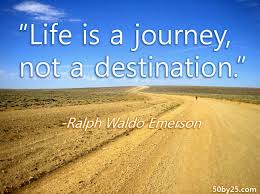
….said my prof as she tried to unravel my latest draft paper. A good question and one I have been mulling over at length. In the spirit of academic metaphors, at the moment I feel my reading is like a game of pick up sticks or perhaps Jenga. I can’t touch one thing, or idea, without bumping up against another. A good friend who has been through this told me that “after the proposal” was the best time in her professional doctorate, you have the ground work done and can actually get on and do the thing you’ve been working towards for (often) years. That bit before the proposal though, and before the comprehensive exam? That’s the teetering Jenga tower, the mess of sticks … the time when you realise how much you don’t know and what it’s going to take to stand up in front of the comprehensive exam panel, your supervisory committee and convince them that you’re ready to get going.
So my reading has been around theory, both queer and feminist, and then a quick tour around my conceptual framework – meaning what concepts will be foundational to my future work and how do they fit together? My research question is how do LGB radiation therapists manage their identities at work? How do they negotiate the complexities of coming out – and how do they decide? When you unpack this idea it’s obvious some work will have to be done on non-heterosexual identities, what “being out” means and why it’s (still) an issue. Our fundamental idea of being “professional” relies on an underlying and usually unarticulated assumption that the person at work is male (rational, unemotional), straight, white, able bodied etc. (Colgan and Rumens, 2015). So sexual orientation in the workplace is an area of research that has examined this tension – with a small subset that looks at the health care workplace. It’s also good to see a growing body of work on improving the experience of queer patients, this will also be important to look at – although most of it assumes they (we) are a “problem” to fix (with our inconveniently high rates of cancer, mental illness and whatnot).
From my own experiences, I think the results won’t be unequivocally “this is what it is like”, but I do have a sense that some of the issues above will be important. There are likely others that I can’t see yet, or might not know until I have talked to the participants of the study. But I’ve already found a chance reference; discussion or recommendation can open up a new way of looking at something. A paper I found by accident, for example, that looked at how LGB practitioners manage clinical examination of their patients (including scenarios where they may have a chaperone for an opposite-sex patient). The authors concluded that:
(LGB) healthcare professionals engage in a complex interplay of identity management strategies to avoid homophobic abuse; as a signal of safety from homophobia and understanding for their lesbian, gay, and bisexual patients and as a desexualisation strategy principally for gay men and their women patients. (Riordan, p. 1227)
I love the idea of “a signal of safety” – healthcare professionals flagging to queer patients that they are understood, and that they are safe to come out. We strive for that level of cultural competence and empathy for many different groups; it’s rarely discussed for queer patients. One part of the Jenga tower, one of the entangled sticks but hopefully one that will remain.

References:
Colgan, F., & Rumens, N. (2015). Understanding sexual orientation at work. In F. Colgan & N. Rumens (Eds.), Sexual orientation at work: Contemporary issues and perspectives. New York, NY, USA: Routledge
Riordan, D. C. (2004). Interaction strategies of lesbian, gay, and bisexual healthcare practitioners in the clinical examination of patients: qualitative study. BMJ, 328(7450), 1227–1229
